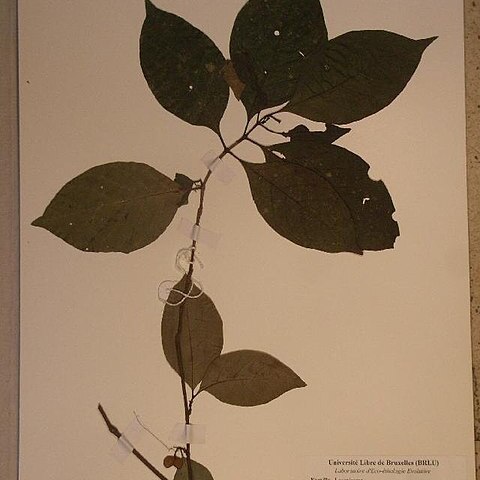Stamens included or in long staminate Howers slightly exserted; filaments usually pubescent, those of short stamens often widened near the anther when young, inserted at about one–third from the base of the corolla tube; anthers 0·07–1·2 x 0·6–1 mm.
Leaf blade dull when dry, extremely variable in shape and size, 1·2–6 x as long as wide, variously hairy or glabrous, beneath often with domatia in the angles of some secondary veins.
Ovary about 1·2–2 x as long as wide, 1–1·5 x 0·6–1·2 mm., glabrous or appressed–pubescent near the apex (varying independently from the indumentum and the shape of the sepals).
Peduncle, branches, and pedicels short or long, densely appressed–pubescent to glabrous, sometimes slightly strigillose, all more or less independently variable.
Capsule mostly medium to dark brown when dry, usually bilobed, glabrous or hairy, dull.
Shrub, undershrub, or occasionally liana, 0·30–7 m. high, usually much branched.
Bracts very small, triangular, approximately sepal–like.
Stems erect or overhanging, with spreading branches.
Twigs near the apex variously hairy or glabrous.
Corolla mostly white with a yellow base.
Extremely variable shrub, 1-23 ft. high
Sepals ovate to ovate-linear

